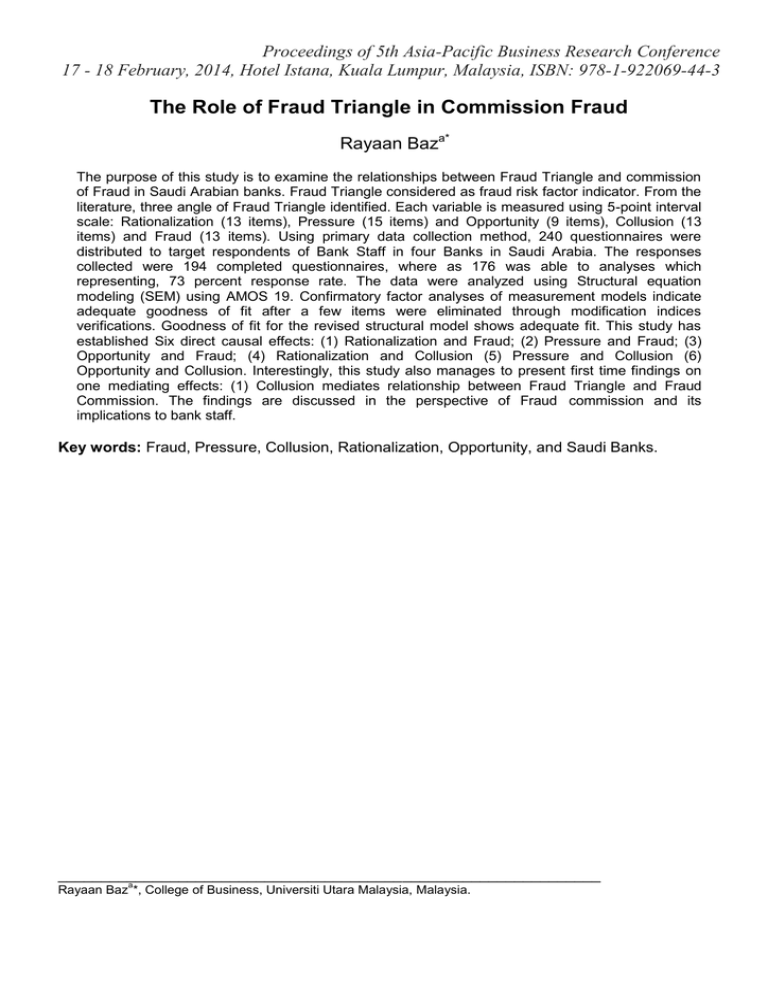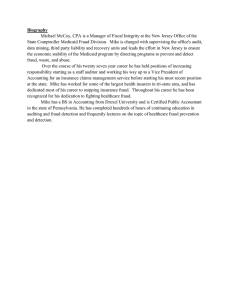Proceedings of 5th Asia-Pacific Business Research Conference
advertisement

Proceedings of 5th Asia-Pacific Business Research Conference 17 - 18 February, 2014, Hotel Istana, Kuala Lumpur, Malaysia, ISBN: 978-1-922069-44-3 The Role of Fraud Triangle in Commission Fraud Rayaan Baza* The purpose of this study is to examine the relationships between Fraud Triangle and commission of Fraud in Saudi Arabian banks. Fraud Triangle considered as fraud risk factor indicator. From the literature, three angle of Fraud Triangle identified. Each variable is measured using 5-point interval scale: Rationalization (13 items), Pressure (15 items) and Opportunity (9 items), Collusion (13 items) and Fraud (13 items). Using primary data collection method, 240 questionnaires were distributed to target respondents of Bank Staff in four Banks in Saudi Arabia. The responses collected were 194 completed questionnaires, where as 176 was able to analyses which representing, 73 percent response rate. The data were analyzed using Structural equation modeling (SEM) using AMOS 19. Confirmatory factor analyses of measurement models indicate adequate goodness of fit after a few items were eliminated through modification indices verifications. Goodness of fit for the revised structural model shows adequate fit. This study has established Six direct causal effects: (1) Rationalization and Fraud; (2) Pressure and Fraud; (3) Opportunity and Fraud; (4) Rationalization and Collusion (5) Pressure and Collusion (6) Opportunity and Collusion. Interestingly, this study also manages to present first time findings on one mediating effects: (1) Collusion mediates relationship between Fraud Triangle and Fraud Commission. The findings are discussed in the perspective of Fraud commission and its implications to bank staff. Key words: Fraud, Pressure, Collusion, Rationalization, Opportunity, and Saudi Banks. _______________________________________________________________ a Rayaan Baz *, College of Business, Universiti Utara Malaysia, Malaysia.


